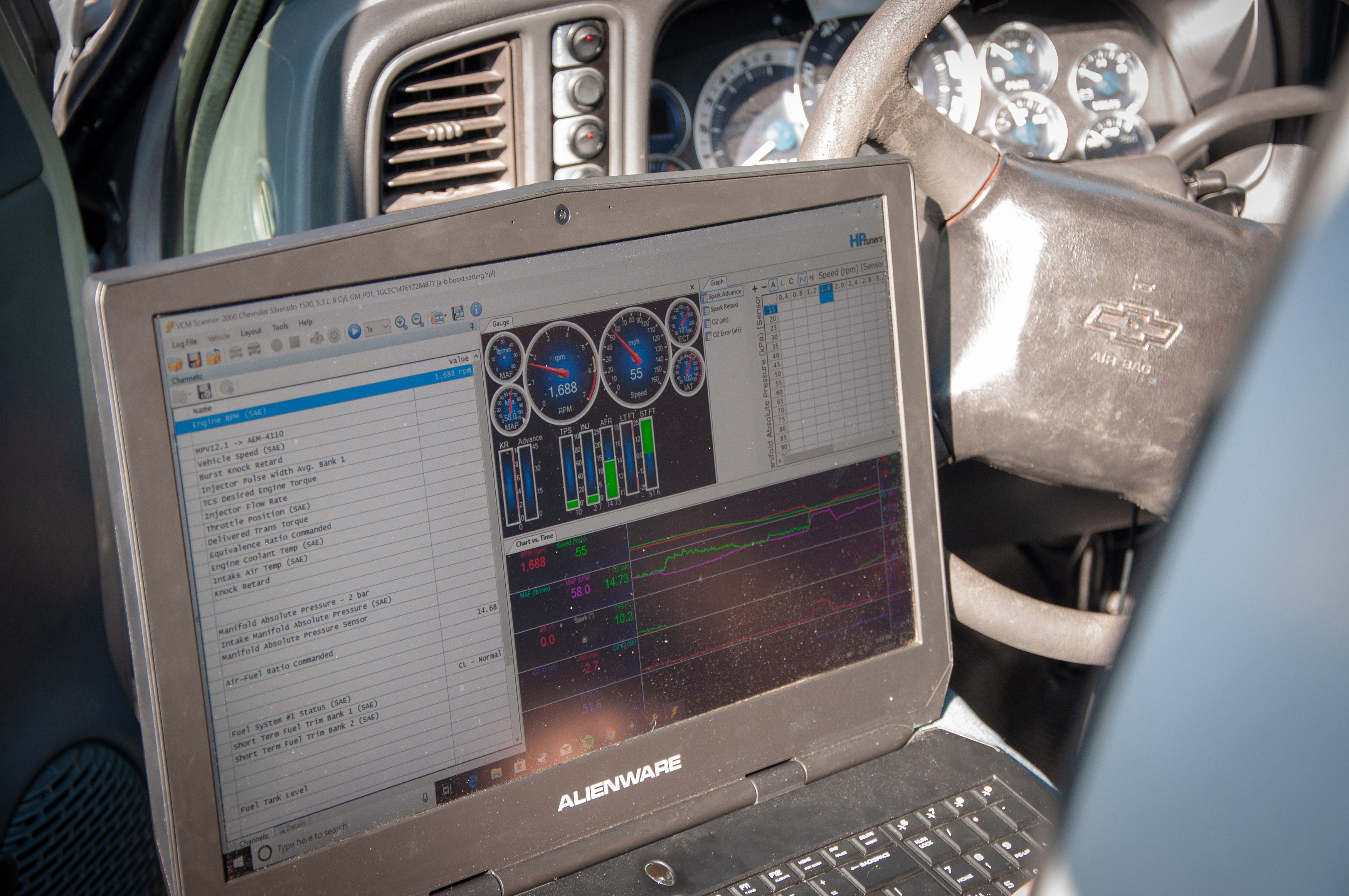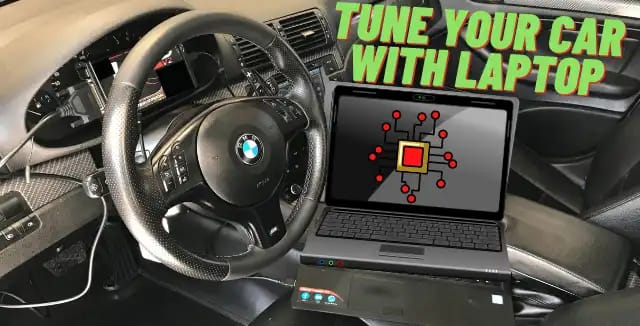To tune a car with a laptop, download tuning software and connect to the car’s ECU port. Adjust settings for optimal performance.
Tuning a car with a laptop allows for customized adjustments to improve engine power and fuel efficiency. By connecting the laptop to the car’s onboard computer system, known as the Engine Control Unit (ECU), car enthusiasts can modify various parameters such as ignition timing, air-fuel ratio, and boost levels.
This process, known as ECU tuning, can enhance the overall performance of the vehicle, providing a personalized driving experience tailored to the driver’s preferences. Additionally, tuning with a laptop offers the flexibility to make real-time adjustments and fine-tune the vehicle’s performance based on driving conditions and individual requirements.
Choosing The Right Software
Tuning a car with a laptop requires the right software to achieve precise adjustments. The software should be compatible with the car’s engine and offer comprehensive tuning options. It’s essential to research and choose software that meets the specific requirements for effective car tuning with a laptop.
Compatibility With Car Model
When it comes to tuning your car with a laptop, choosing the right software is crucial. Before diving into the features and functionality, it’s important to ensure that the software you select is compatible with your car model. Compatibility is the key to achieving optimal results.
For successful tuning, you need software that is specifically designed to work with the make and model of your car. Different car manufacturers use varying communication protocols, so it’s essential to choose software that supports the specific protocol used by your car.
Features And Functionality
Beyond compatibility, you should consider the features and functionality offered by the software. This will determine how much control you have over the tuning process and the extent to which you can optimize your car’s performance.
Look for software that allows you to adjust various parameters such as fuel injection timing, air-fuel ratios, ignition timing, and boost pressure. The ability to monitor real-time data through live gauges and data logging capabilities is also a valuable feature to have.
Additionally, software with a user-friendly interface and intuitive navigation will make the tuning process smoother and more efficient. After all, you want to spend more time tuning your car and less time figuring out how to use the software.
Consider these factors while choosing the software so that you can take full advantage of the tuning potential of your car and unleash its true performance.

Credit: www.lsxmag.com
Connecting The Laptop To The Car
Connect your laptop to your car for easy tuning with this simple guide. Learn how to use your laptop to optimize your car’s performance and make adjustments as needed, all in just a few steps.
Obtaining The Necessary Cables
Before connecting your laptop to the car, ensure to acquire the required OBD-II cable. Compatible cables are essential for a successful connection.Establishing A Secure Connection
To connect, locate the OBD-II port under the dashboard or near the driver’s seat. Gently insert the cable ensuring a snug fit, avoiding any force.Reading And Analyzing Data
Learn how to tune your car using a laptop by reading and analyzing data. Utilize software to make adjustments for optimal performance. Increase efficiency and power through data-driven modifications with ease.
Diagnostic Trouble Codes
By accessing the OBD-II port of your car, you can retrieve Diagnostic Trouble Codes which indicate specific issues with the vehicle.
- Check the codes using your laptop with diagnostic software.
- Identify the problem areas outlined by the codes.
- Take necessary actions to address the issues.
Sensor Readings And Parameters
Utilize your laptop to view real-time sensor readings and parameters, allowing you to understand the performance of crucial components.
- Monitor the engine coolant temperature, air-fuel ratio, and oxygen sensor data.
- Analyze the sensor readings to ensure optimal functioning of the car.
- Adjust settings accordingly based on the data received.

Credit: blog.demon-tweeks.com
Adjusting Performance Parameters
Optimize your vehicle’s performance by adjusting the parameters using a laptop. Tuning your car electronically enhances horsepower and fuel efficiency for a smoother driving experience.
When it comes to tuning a car with a laptop, adjusting the performance parameters is an essential step. This allows you to fine-tune your car’s engine for maximum power, efficiency, and overall performance. Two crucial performance parameters that you can adjust using your laptop are engine timing and fuel maps, as well as turbo boost levels.
Engine Timing And Fuel Maps
Engine timing and fuel maps play a vital role in how your car performs. Engine timing refers to the precise moment when the spark plug ignites the air-fuel mixture in the cylinders. By adjusting the engine timing, you can optimize the combustion process, resulting in improved power and fuel efficiency.
Fuel maps, on the other hand, determine the amount of fuel injected into the cylinders based on various factors like throttle position, engine speed, and load. Modifying fuel maps enables you to calibrate the perfect air-fuel ratio for your engine’s needs, achieving better performance and responsiveness.
Turbo Boost Levels
If your car is equipped with a turbocharger, adjusting the turbo boost levels can significantly impact its performance. The turbocharger compresses the incoming air, allowing more oxygen to enter the cylinders, resulting in increased power output.
By connecting your laptop to the car’s engine control unit (ECU), you can adjust the turbo boost levels. Increasing the boost pressure delivers more air to the engine, resulting in a higher power output. However, it’s crucial to find the right balance, as excessive boost pressure can lead to damaging the engine components or even causing engine knock.
To adjust the performance parameters mentioned above, you will need a laptop and the appropriate software. Through the laptop’s connection to the ECU, you can access the software interface, providing you with various settings that can be modified.
However, it’s important to note that tuning a car with a laptop requires knowledge and expertise. To avoid potential problems and ensure the best results, seek assistance from a skilled tuner or professional who specializes in car performance tuning. They have the experience and expertise required to adjust these performance parameters safely and efficiently.
Testing And Verifying Changes
After making adjustments to your car’s performance using a laptop, it’s crucial to validate the changes to ensure optimal results. This step is essential for fine-tuning and achieving the desired performance enhancements.
On-road Performance Evaluation
Conducting on-road performance evaluations allows you to directly assess the impact of tuning changes in real-world driving conditions. Assess acceleration, throttle response, and overall drivability to gauge the effectiveness of the modifications.
Dyno Testing For Accuracy
Utilize dyno testing to precisely measure and verify the performance gains achieved through laptop tuning. Dyno testing provides quantitative data on horsepower, torque, and other vital performance metrics, offering a comprehensive understanding of the modifications’ impact.

Credit: www.lsxmag.com
Frequently Asked Questions Of How To Tune A Car With A Laptop
Can You Tune Your Own Car With A Laptop?
Yes, you can tune your car using a laptop. It allows you to modify the engine’s performance through software.
Can I Tune My Ecu Myself?
Yes, it is possible to tune your ECU yourself with the right tools and knowledge. However, it requires technical expertise and familiarity with ECU tuning software. It’s important to research and proceed carefully to avoid damaging your vehicle’s engine. Consulting a professional tuner is advisable for best results.
What Software Do You Need To Tune A Car?
You need specialized tuning software to tune a car, such as popular options like HP Tuners, EcuTek, or Cobb Accessport. These tools allow you to adjust engine parameters for optimal performance.
How To Tune A Car Yourself?
To tune a car yourself, follow these steps: 1. Research and understand your car’s specifications. 2. Invest in a diagnostic tool to identify areas of improvement. 3. Adjust the air intake and fuel systems for better performance. 4. Fine-tune the ignition timing and spark plugs.
5. Test and monitor your modifications for optimal results.
Conclusion
To sum up, tuning a car with a laptop is an efficient and advanced method that allows car enthusiasts to unleash the full potential of their vehicles. Through the use of specialized software and a laptop, drivers can customize various engine parameters and achieve optimal performance.
Whether it’s boosting horsepower, improving fuel efficiency, or enhancing overall driving experience, this technology opens up a whole new realm of possibilities. So, if you’re looking to take your car to the next level, don’t hesitate to explore the world of laptop tuning.
It’s a game-changer in the automotive industry.
